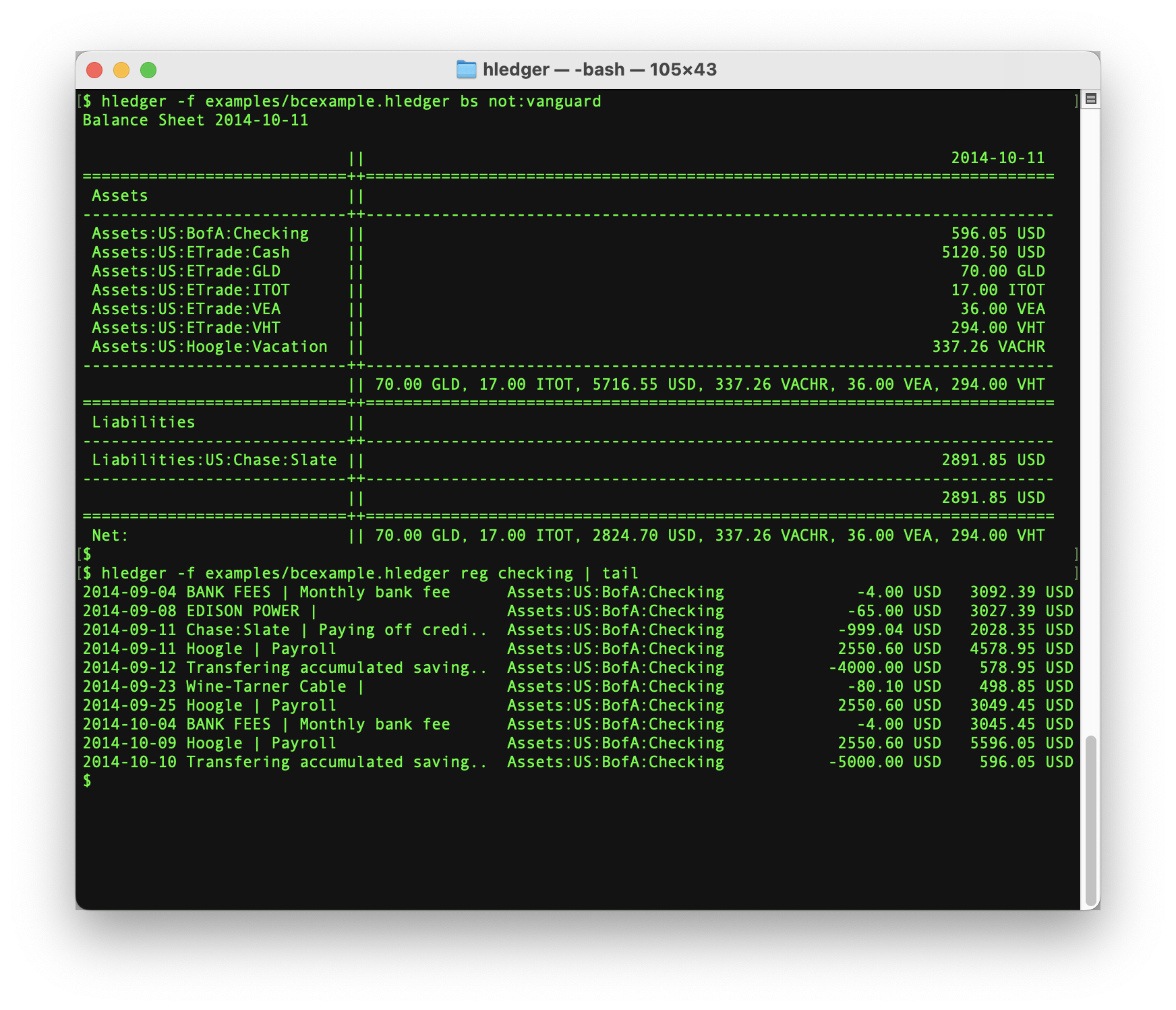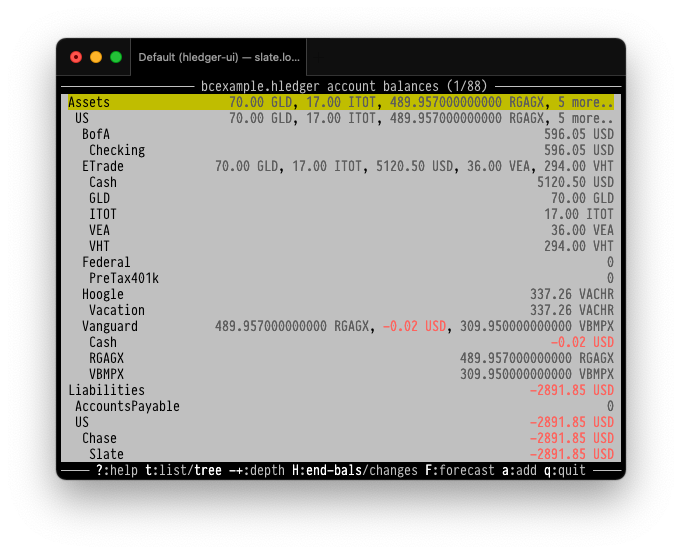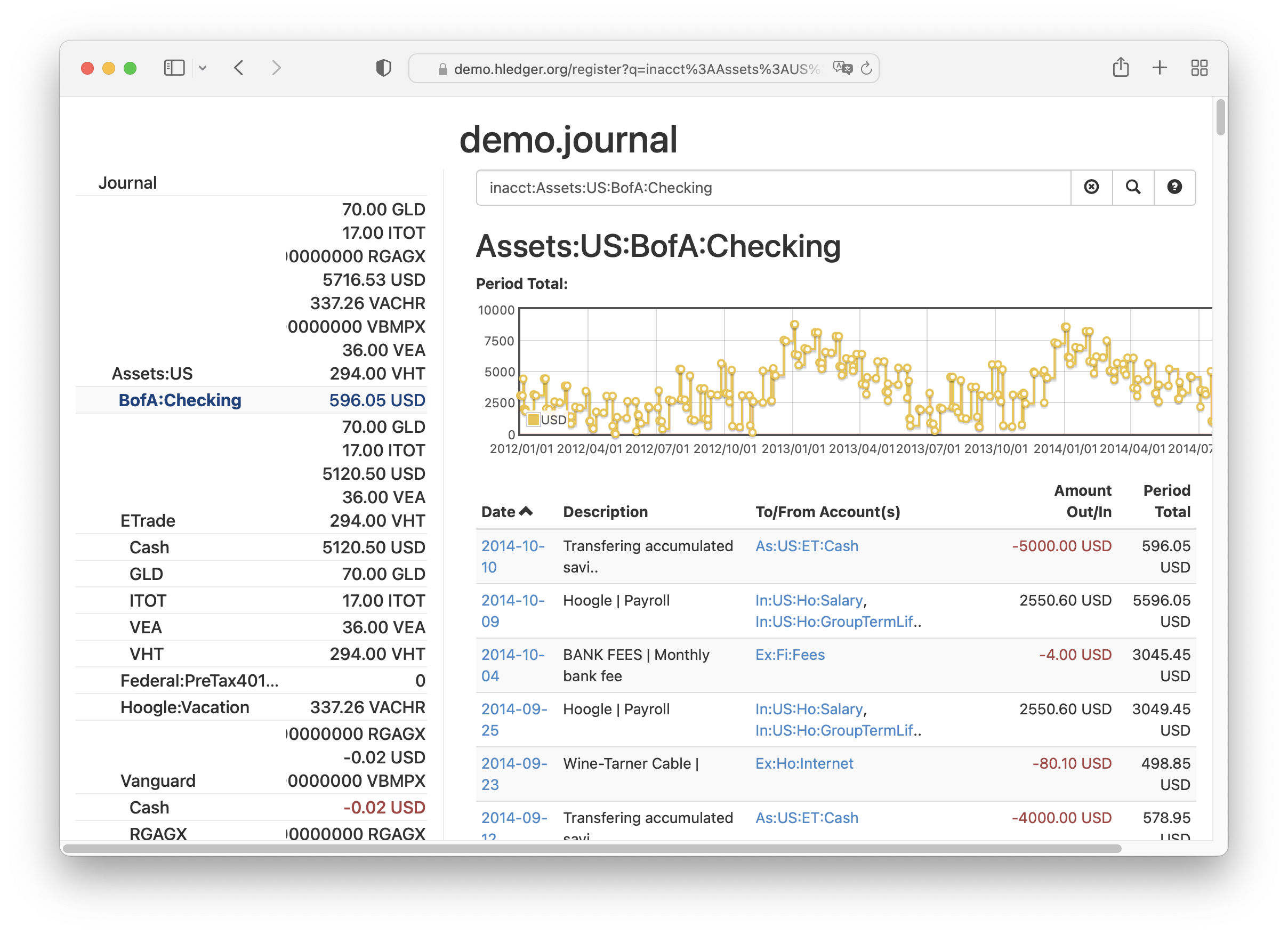
hledger
plain text accounting software
hledger is free, GPLv3+ accounting software that runs on unix, mac, windows, and the web.
More precisely, it is user-friendly plain text accounting software, which uses human-readable, future-proof, plain text data files. Your financial data remains local, private, and free from vendor lock-in. (Also version-controllable and scriptable.)
hledger is fast, lightweight, and dependable. It comes with command line, TUI, and web browser interfaces. There are also some compatible phone apps. It is comfortable for technical users, but also usable by non-techies (perhaps with a little setup help). Command line skills are useful but not essential. You can enter data using your favourite text editor, or a data entry tool, or by downloading and importing CSV data from banks and other financial institutions.
hledger is flexible. Using time-tested double entry bookkeeping, with an easier-to-learn sign convention, it can track and report on money, investments, cryptocurrencies, time, inventory, or any countable commodity. Use it to: figure out personal finances.. run a business.. run a non-profit.. run a FOSS project.. provide data for tax filing.. learn bookkeeping.. track time.. manage a D&D game..
hledger is actively maintained and used (since 2007!) with an improved version released each quarter. We take quality seriously; if you find or fix a regression, we'll pay you $50. It is built with the powerful, high assurance Haskell programming language. It is a long term project led by Simon Michael with many contributors.
Features goes into more detail on these. FAQ answers some common questions.
Get started!
Welcome! This plain text accounting stuff is both useful and much more fun than you'd think.
Install tells how to get an up-to-date version of hledger quickly.
Support lists our chats and other fora - don't hesitate to ask questions, report issues, or search.
Docs has the info you might need next. Here are some common paths for getting started:
-
If you're technical and want a quick taste of hledger:
try the 2 minute, 5 minute, or 10 minute quick starts. -
If you'd like to go straight to the authoritative reference:
read the hledger manual. -
If you'd like a more gentle introduction:
read hledger by example, or see the tutorials.
-
If you like to learn by exploring:
try running some commands. You won't break anything. Here's a good sequence:hledger setup,hledger,hledger demo,hledger add,hledger print,hledger balance,hledger ui,hledger web,hledger help -
If you'd like to avoid the terminal and use a web browser instead:
see Tutorial: hledger-web and the hledger-web demo. -
If you'd like to watch/listen to a video:
see Videos. -
If you'd like to learn more about the accounting part:
see Accounting basics for PTA users and maybe Accounting: further study.
Get involved
Your support is invaluable and greatly appreciated! See Sponsor hledger and Finance.
To contribute in other ways, see Contributor Quick Start and Developer docs.
CREDITS shows many of the people who have contributed code over the years.
And before we end the page, a few tips for using this website:
- The lines button at top left toggles the site's navigation sidebar.
- The paintbrush button changes the site theme.
- The magnifying-glass button searches this site.
- The left and right arrow keys step through the pages (as listed in the sidebar).
- Access keys are also available:
ssidebar,ttheme,/search,1home,2changes.


